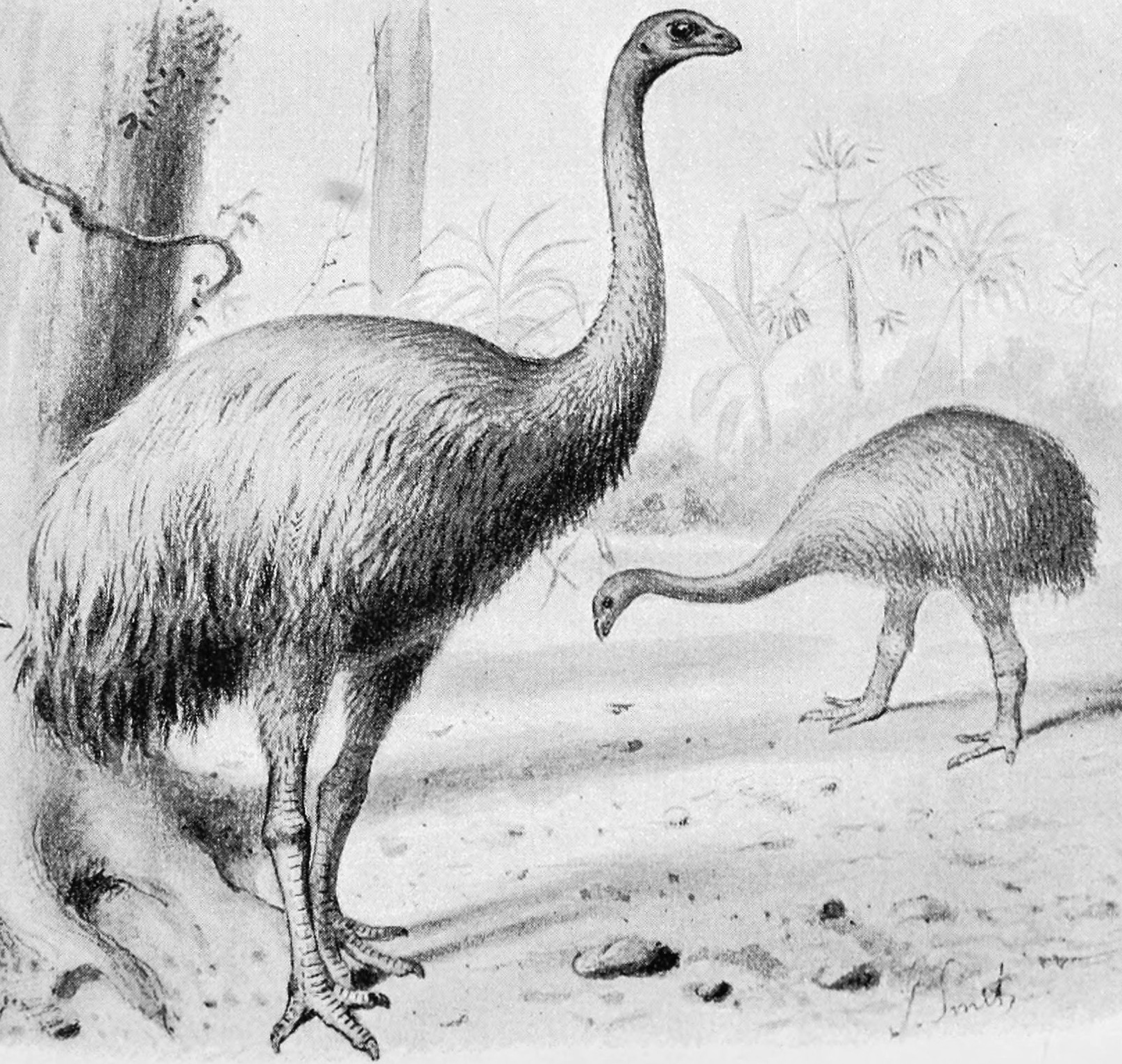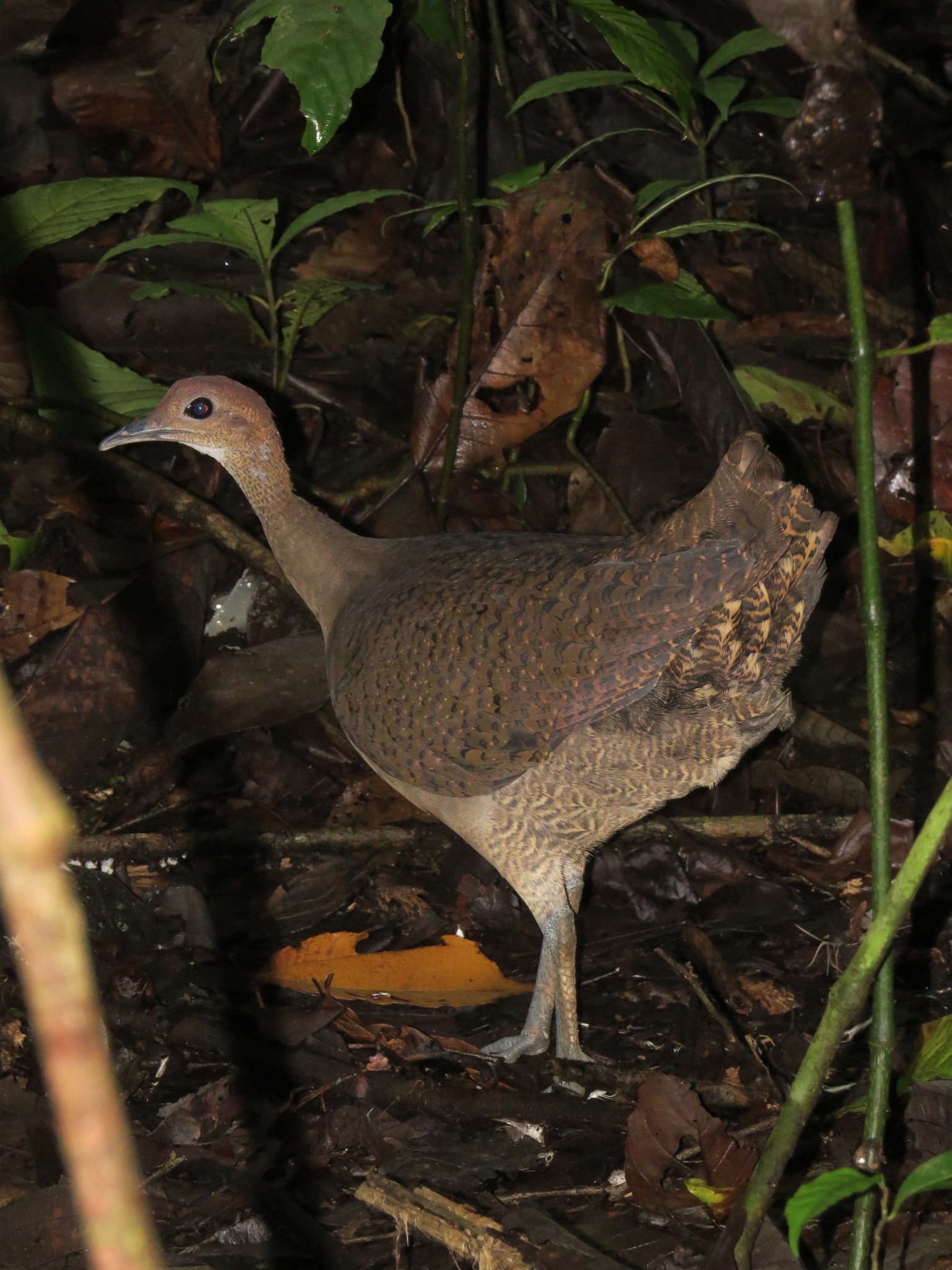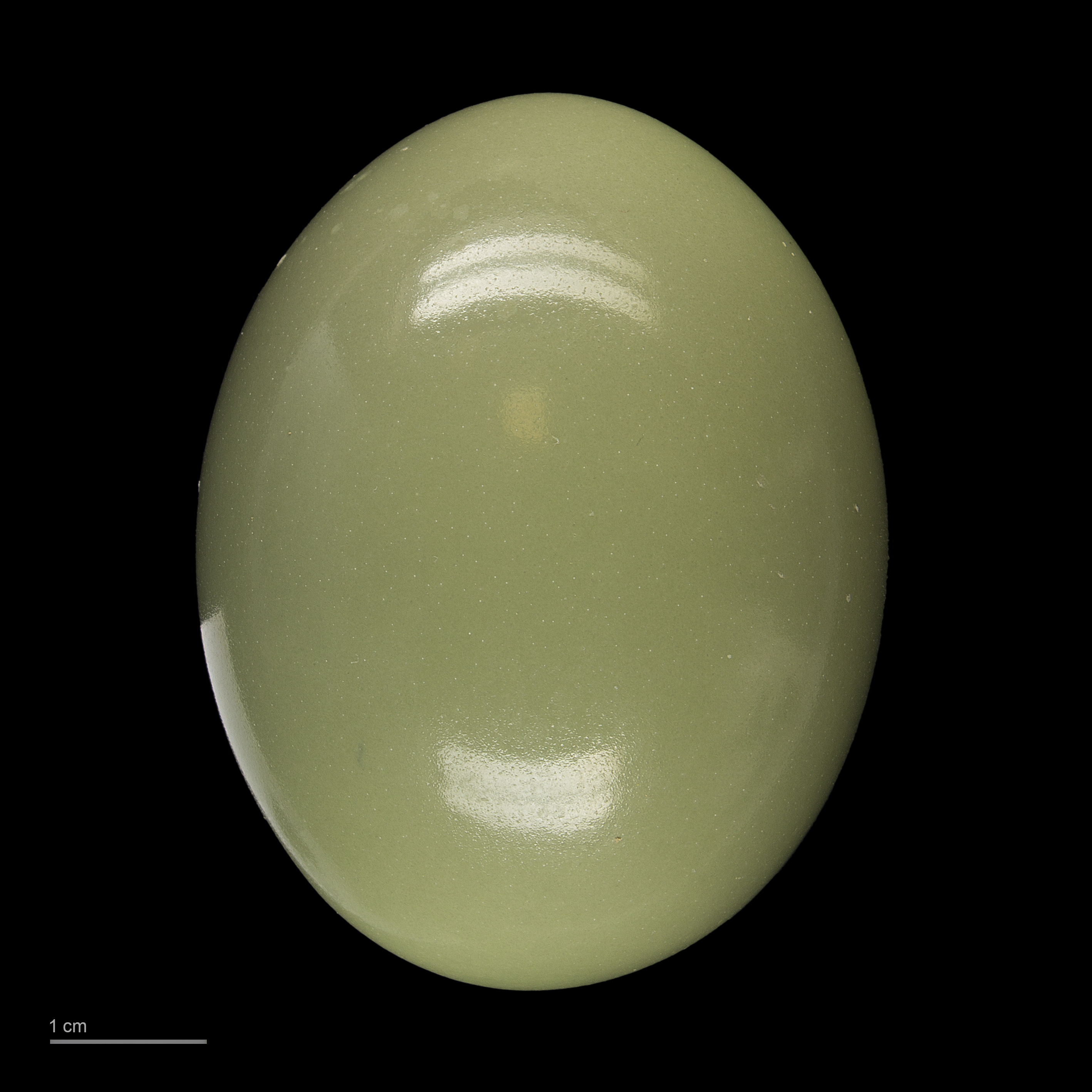|
Tinamou
Tinamous () are members of the order Tinamiformes (), and family Tinamidae (), divided into two distinct subfamily, subfamilies, containing 46 species found in Mexico, Central America, and South America. The word "tinamou" comes from the Carib language, Galibi term for these birds, ''tinamu''. Tinamous are the only living group of Palaeognathae, palaeognaths able to fly, and were traditionally regarded as the sister group of the flightless ratites, but recent work places them well within the ratite radiation as most closely related to the extinct moa of New Zealand, implying flightlessness emerged among ratites multiple times. Tinamous first appear in the fossil record in the Miocene epoch. They are generally sedentary, ground-dwelling and, though not flightless, when possible avoid flight in favour of hiding or running away from danger. They are found in a variety of habitats, ranging from semi-arid climate, semi-arid alpine climate, alpine grasslands to tropical rainforests. The ... [...More Info...] [...Related Items...] OR: [Wikipedia] [Google] [Baidu] |
Crypturellus
''Crypturellus'' is a genus of tinamous containing mostly forest species. However, there are the odd few that are grassland or steppe tinamous. The genus contains 21 species. Taxonomy The genus ''Crypturellus'' was introduced in 1914 by the British ornithologists Baron Brabourne and Charles Chubb with the Tataupa tinamou as the type species. The genus name combines the Ancient Greek κρυπτός (''kruptós'') meaning "hidden" with οὐρά (''oura'') meaning "tail". The ''-ellus'' is a diminutive so that the name means "small hidden tail". Description ''Crypturellus'' members, like other tinamous, have a cryptic color scheme dominated by browns, buffs, yellows, and greys. Unlike the rest of the family, these birds show some sexual dimorphism: the females are more heavily barred than the males and are also a bit brighter and larger. Range The majority of species occupy forests or rain forests, preferring lower elevations. They range from Uruguay to Mexico. However, the ear ... [...More Info...] [...Related Items...] OR: [Wikipedia] [Google] [Baidu] |
Tinaminae
Tinaminae, the forest tinamous,Brown, Joseph W. (2005) is one of two subfamily, subfamilies of the family (biology), family Tinamidae, the other being Nothurinae. Description These birds, like other tinamous, are ground birds that prefer to run and walk, but will fly when they must. They differ physiologically by having their nostrils halfway down their bill or more. They range in size from the largest, being the grey tinamou at and the solitary tinamou at , which are also the largest of all the tinamous, to the little tinamou at and and the small-billed tinamou at and . They are a very compact muscular bird, with a slightly wikt:decurved, decurved beak. Their tail is short and rudimentary and appears near non-existent. They have a large amount of feathers on their back and posterior regions. some believe to assist in escaping predators by being able to shed feathers that have been grabbed. Their plumage is drab and cryptic with colors of dark brown, rufous, and buff. They ... [...More Info...] [...Related Items...] OR: [Wikipedia] [Google] [Baidu] |
Tinamus Major
The great tinamou (''Tinamus major'') is a species of tinamou ground bird native to Central and South America. There are several subspecies, mostly differentiated by their coloration. Taxonomy The great tinamou was described and illustrated in 1648 by the German naturalist Georg Marcgrave in his ''Historia Naturalis Brasiliae''. Marcgrave used the name ''Macucagua''. The French polymath Georges-Louis Leclerc, Comte de Buffon described and illustrated the great tinamou in 1778 in his ''Histoire Naturelle des Oiseaux'' from specimens collected in Cayenne, French Guiana. He simplified Marcgrave's name to ''Magoua''. When in 1788 the German naturalist Johann Friedrich Gmelin revised and expanded Carl Linnaeus's ''Systema Naturae'', he included the great tinamou and placed it with all the grouse like birds in the genus '' Tetrao''. He coined the binomial name ''Tetrao major'' and cited the earlier authors. The great tinamou is now placed with four other species in the genus '' Tinamu ... [...More Info...] [...Related Items...] OR: [Wikipedia] [Google] [Baidu] |
Elegant Crested Tinamou
The elegant crested tinamou or martineta tinamou (''Eudromia elegans'') is a medium-sized tinamou that can be found in southern Chile and Argentina in Shrubland. The bird has an omnivorous diet. This species is terrestrial due to their poor flying ability. Description The elegant-crested tinamou is a partridge-like shaped bird with rounded wings. The bird is an olive-brown color with the plumage being mainly black and white vermiculations. The bird has a long off-white stripe that starts above the eye and continues down the side of the neck. The beak is short, comes to a sharp upright point. The species legs and feet are short and strong, built for running. Both of those features have a whitish-grey coloring. The elegant-crested tinamou averages 39 to 41 cm (15–16 in) long. They can be found in flocks of about 5-10 birds, and are often detected by whistle calls. Habitat The elegant crested tinamou avoids tall and dense grasses and very thick stands of brush. Ideal envi ... [...More Info...] [...Related Items...] OR: [Wikipedia] [Google] [Baidu] |
Palaeognathae
Palaeognathae (; ) is an infraclass of birds, called paleognaths or palaeognaths, within the class Aves of the clade Archosauria. It is one of the two extant taxon, extant infraclasses of birds, the other being Neognathae, both of which form Neornithes. Palaeognathae contains five extant order (biology), orders consisting of four flightless bird, flightless lineages (plus two that are extinct), termed ratites, and one flying lineage, the Neotropic tinamous. There are 47 species of tinamous, five of Kiwi (bird), kiwis (''Apteryx''), three of cassowary, cassowaries (''Casuarius''), one of emus (''Dromaius'') (another became extinct in historic times), two of Rhea (bird), rheas (''Rhea'') and two of ostriches (''Struthio'').Clements, J. C. ''et al''. (2010) Recent research has indicated that paleognaths are monophyletic but the traditional taxonomic split between flightless and flighted forms is incorrect; tinamous are within the ratite radiation, meaning flightlessness arose indepe ... [...More Info...] [...Related Items...] OR: [Wikipedia] [Google] [Baidu] |
Nothoprocta
''Nothoprocta'' is a genus of birds belonging to the tinamou family Tinamidae. They inhabit scrubland, grassland and open woodland in western South America, particularly in the Andes. They are poor fliers and spend most of their time on the ground. Their diet includes seeds and insects. They nest on the ground, laying large glossy eggs. The eggs are covered with feathers when a potential predator is nearby. They are medium-sized tinamous, long. They have strong legs and fairly long, downcurved bills. The plumage is mostly grey-brown with intricate black, white and buff markings. The birds have loud, whistling calls. Species list There are at least six species in the genus. A seventh species, Kalinowski's tinamou, ''Nothoprocta kalinowskii'', is sometimes recognized but is more likely to be a junior synonym of ''Nothoprocta ornata branickii'', a subspecies of the ornate tinamou. The SACC voted to demote the Kalinowski's Tinamou, on 14 Feb 2007. * ''Nothoprocta taczanowskii ... [...More Info...] [...Related Items...] OR: [Wikipedia] [Google] [Baidu] |
Taoniscus
The dwarf tinamou (''Taoniscus nanus''), also known as the least tinamou, is a small, superficially partridge-like bird with short tail and wings, found only in Brazil. This tinamou is the only member of the genus ''Taoniscus'' and it is considered an endangered species. Taxonomy and systematics All tinamou are from the family Tinamidae, and in the larger scheme are also ratites. Unlike other ratites, tinamous can fly, although in general, they are not strong fliers. All ratites evolved from prehistoric flying birds, and tinamous are the closest living relative of these birds.Davies, S. J. J. F. (2003) The dwarf tinamou is the only member of the genus ''Taoniscus'' and is a monotypic species. A phylogenetic study published in 2022 found that the dwarf tinamou was embedded within the genus '' Nothura''. Description It is approximately long. It is greyish-brown with a pale throat, boldly patterned neck and upper parts, and it has brown-barred buff underparts and a blackish c ... [...More Info...] [...Related Items...] OR: [Wikipedia] [Google] [Baidu] |
Ratite
Ratites () are a polyphyletic group consisting of all birds within the infraclass Palaeognathae that lack keels and cannot fly. They are mostly large, long-necked, and long-legged, the exception being the kiwi, which is also the only nocturnal extant ratite. The understanding of relationships within the paleognath clade has been in flux. Previously, all the flightless members had been assigned to the order Struthioniformes, which is more recently regarded as containing only the ostrich. The modern bird superorder Palaeognathae consists of ratites and the flighted Neotropic tinamous (compare to Neognathae). Unlike other flightless birds, the ratites have no keel on their sternum—hence the name, from the Latin ('raft', a vessel which has no keel—in contradistinction to extant flighted birds with a keel). Without this to anchor their wing muscles, they could not have flown even if they had developed suitable wings. Ratites are a polyphyletic group; tinamous fall within the ... [...More Info...] [...Related Items...] OR: [Wikipedia] [Google] [Baidu] |
Tinamotis
'' Tinamotis '' is a genus of birds in the tinamou family. Taxonomy All tinamou are from the family Tinamidae, and in the larger scheme are also ratite Ratites () are a polyphyletic group consisting of all birds within the infraclass Palaeognathae that lack keels and cannot fly. They are mostly large, long-necked, and long-legged, the exception being the kiwi, which is also the only nocturnal ...s. Unlike other ratites, tinamous can fly, although in general, they are not strong fliers. All ratites evolved from prehistoric flying birds, and tinamous are the closest living relative of these birds.Davies, S. J. J. F. (2003) Species The species are: Footnotes References * * * ITIS {{Taxonbar, from=Q574867 Bird genera ... [...More Info...] [...Related Items...] OR: [Wikipedia] [Google] [Baidu] |
Tinamus
''Tinamus'' is a genus of birds in the tinamou family Tinamidae. This genus comprises some of the larger members of this South American family. Taxonomy The genus ''Tinamus'' was introduced in 1783 by the French naturalist Johann Hermann. The type species was subsequently designated as the great tinamou. Hermann based his name on "Les Tinamous" used by Georges-Louis Leclerc, Comte de Buffon in his ''Histoire Naturelle des Oiseaux''. The word "Tinamú" in the Carib language Carib or Kariʼnja is a Cariban language spoken by the Kalina people (Caribs) of South America. It is spoken by around 7,400 mostly in Brazil, The Guianas, and Venezuela. The language is currently classified as highly endangered, as it is onl ... of French Guiana was used for the tinamous. The genus contains five species: References {{Authority control Bird genera ... [...More Info...] [...Related Items...] OR: [Wikipedia] [Google] [Baidu] |
Eudromia
''Eudromia'' is a genus of birds in the tinamou family. This genus comprises two crested members of this South American family. Etymology ''Eudromia'' comes from two Greek words, ''eu'' meaning well or nicely, and ''dromos'' meaning a running escape. These definitions together mean, nice running escape, which refers to their habit of escaping predators by running. Taxonomy Tinamous are paleognaths related to the flightless ratites. They are probably close in appearance to the flying ancestors of the ratites. Unlike other ratites, tinamous can fly, although in general, they are not strong fliers.Davies, S. J. J. F. (2003) This genus has a mere 2 species, but the elegant crested tinamou has diversified into a considerable number of subspecies: The species are:Mikko's Phylogeny Archiv Extant Species Fossils *†''Eudromia'' sp. (Late Miocene of La Pampa Province, Argentina) *†'' Eudromia olsoni, E. olsoni'' Tambussi & Tonni 1985 Tinamisornis_intermedius.html" ;"ti ... [...More Info...] [...Related Items...] OR: [Wikipedia] [Google] [Baidu] |
Nothocercus
''Nothocercus'' is a genus of birds in the tinamou family. This genus comprises three species of this South American family. ''Nothocercus julius'' (the tawny-breasted tinamou) occupies humid montane forest at middle to high elevations in the Andes from Venezuela south to Peru. It is currently losing its habitat due to clearance of the forest due to agricultural and livestock grazing. Etymology ''Nothocercus'': ''nothos'' "spurious"; κερκος ''kerkos'' "tail" Species The species are: * ''Nothocercus bonapartei'', highland tinamou located in the Andes of Colombia, Ecuador, northern Peru, western Venezuela, and the highlands of Costa Rica and western PanamaClements, J. (2007) ** ''Nothocercus bonapartei frantzii'' located in Costa Rica and western Panama ** ''Nothocercus bonapartei bonapartei'' located in northwestern Venezuela and northern Colombia ** ''Nothocercus bonapartei discrepans'' located in central Colombia ** ''Nothocercus bonapartei intercedens'' located ... [...More Info...] [...Related Items...] OR: [Wikipedia] [Google] [Baidu] |



